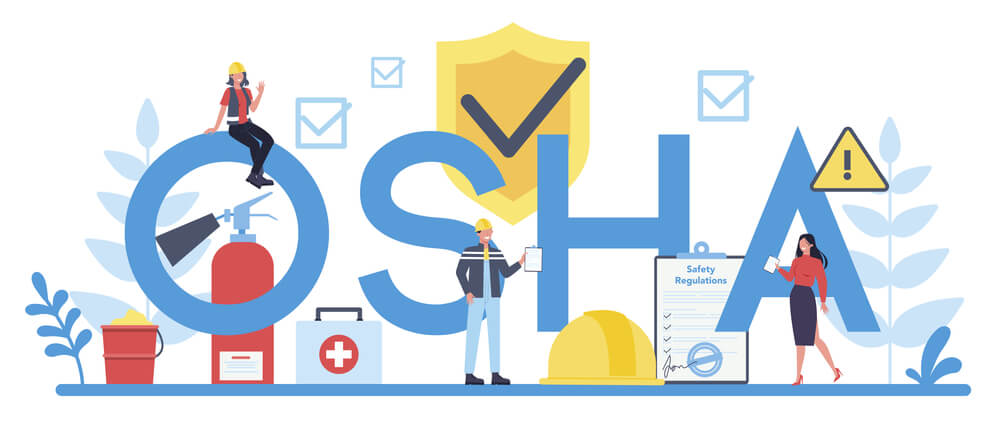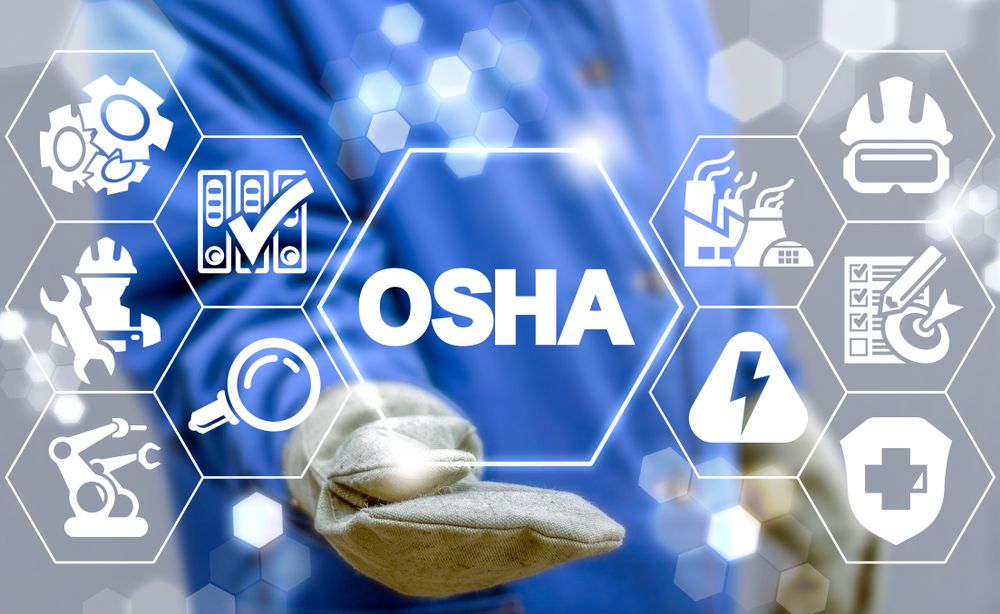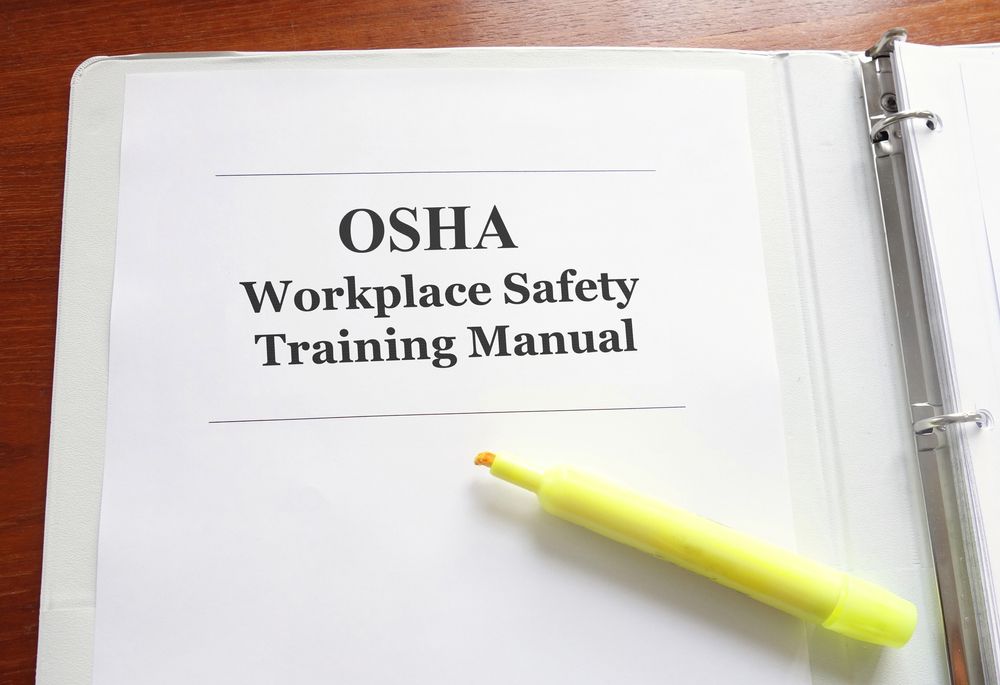
Blog
What is OSHA?
Overseeing safe working conditions and regulations for American workers falls within the authority of the Occupational Safety and Health Administration (OSHA), a federal agency. To address the high rates of diseases, injuries, and fatalities in American workplaces, OSHA developed and administered the Occupational Safety and Health. The OSH Act lays out several employer obligations and employee rights regarding occupational health and safety. It is believed that the establishment of OSHA and the OSH Act contributed to a nearly 60% decrease in workplace fatalities and a decrease in occupational illnesses and injuries.

What is ANSI?
Like OSHA, the American National Standards Institute is virtually always referred to by its abbreviation, ANSI. However, ANSI doesn't set restrictions, unlike OSHA. It collaborates with a broad spectrum of stakeholders, including trade associations, consumer advocacy groups, and rights groups, to create voluntary safety and health rules and standards for products like ANSI Z87 safety glasses, services, and the workplace.
Similarities between ANSI and OSHA
There are many parallels between the two:
- Both ANSI and OSHA publish safety and health standards and work to enhance workplace safety and health through standardized items like safety signs and symbols for safety glasses, protective goggles, and face shields.
- OSHA and ANSI are both regarded as national and international experts on occupational safety and health.
- Construction, manufacturing, healthcare, and transportation are just a few of the industries that OSHA and ANSI work with. Their operations have a broad scope that encompasses a wide spectrum of businesses.
Above all, these organizations offer safety and health-related resources, training, and education.
For more information about ANSI, see our post "What Does ANSI Z87.1 Certified Mean?"
Why Does OSHA Matter?
The primary goals of the Occupational Safety and Health Administration are to provide training, support for compliance, and national pilot projects for health and safety. The stated objective of OSHA is to "provide training, outreach, education, and assistance besides establishing and enforcing standards to assure a healthy and secure workplace for working men and women."

OSHA delineates the obligations of employers to guarantee the provision of a secure work environment for their workforce. To guarantee that employers maintain a safe OSHA workplace free from legal hazards, the OSH Act lays out certain standards. Employers are required to address any safety or health issues as soon as problems are identified.
Important provisions, like the requirement that temporary workers be treated similarly to permanent employees and be granted the same safety requirements are among the many rights that the OSH Act outlines for workers.
OSHA is fully authorized by the OSH Act to establish guidelines for occupational health and safety. OSHA strives to guarantee a safer and more secure working environment for employees across the nation through laws, restricting exposure to hazardous chemicals, and ensuring that workers know hazardous chemical information.
For What Is OSHA Accountable?
OSHA is in charge of ensuring a decrease in workplace accidents as well as giving companies and employees a safer atmosphere. OSHA's responsibilities are broken down into multiple categories to accomplish its objectives.
Creating Safety Standards and Requirements
- OSHA is in charge of establishing workplace rules and regulations as well as deciding the settings they apply to. OSHA has two distinct roles:
- Identify the situations in which standards should be applied and establish them.
- Make sure employers follow such guidelines by enforcing them.
Training
They also provide a variety of tools and practical training for businesses and employees to guarantee that employers follow these rules and OSHA standards.
To guarantee that employers and employees alike comprehend the rationale behind these safety precautions and how to properly implement them, OSHA's standards include providing explanations of the protocols, the equipment, and the training techniques.
Putting Standards in Place
OSHA is also in charge of upholding these regulations. If employees or OSHA officials discover that an employer is disregarding OSHA guidelines, they have the power to impose fines that can amount to thousands of dollars or more. Employees may also report violators or offenders for criminal prosecution in extreme circumstances. OSHA can also initiate investigations to find the causes of any injuries or illnesses related to work.
Categories of Companies Impacted by OSHA Rules
Various private and public companies are affected by OSHA laws, and the requirements vary based on the industry. OSHA's record-keeping rules list the following categories of enterprises as being subject to its regulations:

Companies With Ten or More Workers
A yearly accident and illness report must be completed and submitted to OSHA if your company employs ten or more people.
Businesses in low-hazard Industries
Retail, insurance, services, finance, and real estate are low-hazard businesses. OSHA claims that because companies in these sectors rarely operate dangerous machinery or put themselves in potentially hazardous circumstances, they are merely required to report particular events rather than filing a complete report on injuries and illnesses.
Businesses in the Maritime Sector
Maritime enterprises encompass those engaged in shipbuilding, long shoring, ship maintenance, and ship scrapping. Employers must abide by OSHA's maritime operation requirements to promote worker safety. Here are a few instances of what employers need to be careful of:
- Workers at the shipyard safety and training;
- Machinery inspection before and following usage;
- Longshoring safety precautions and training
- Businesses must abide by OSHA laws and refrain from the following:
- Risks of trips falls, and slips;
- Fire dangers
- Exposure to hazardous chemicals
- Exposure to infectious diseases
Construction Companies
Construction companies develop and maintain roads, buildings, bridges, and other infrastructure. OSHA uses the following rules to gauge construction worker safety:
Before beginning work, tell staff members about any hazardous materials and poisonous substances that may be present at each site.
- Track your asbestos exposure.
- Give workers access to water and restrooms.
- Provide workers with general safety instruction and training on construction equipment.
- If an accident occurs, assist staff members with first aid and medical care.
- Use fall prevention techniques.
- Assure communication on-site during construction processes.
Agricultural Enterprises
Agricultural enterprises gather crops or care for animals. The following are how OSHA oversees agricultural operations, including the safety of farm workers, animals, and animal products, as stated on the website of the United States Department of Labor:
- Fall prevention standards; general environmental controls; and agricultural equipment safety instruction
- Ensuring that field workers and those handling livestock have access to clean water, food, and bathrooms; monitoring the impact of pesticides on crops, animals, and workers.
General Industry Companies
Any company operating in an industry other than agriculture, construction, or maritime is considered a general industry business. Healthcare and manufacturing companies are two examples. OSHA establishes requirements for companies in the general industry, such as
- Employee education and training;
- Feedback from staff about work standards;
- Management commitment to improving workplace safety;
- Hazard detection and assessment;
- Hazard prevention and control.
- Actions small enterprises need to take to comply with OSHA regulations
To assist you in meeting OSHA's requirements for your company, they have a handbook for small businesses. The following is a list of things OSHA expects small firms to meet to comply with their regulations, per the handbook:
- Make an effort to provide a secure workplace for workers.
- Make sure that the tools and equipment are safe to use.
- Train staff members in safety.
- Use color-coded indicators to identify possible danger areas.
- Until the hazard is eliminated, post an OSHA violation at every dangerous location.
- Display an OSHA poster in the office so that staff members can learn about their rights.
- Keep track of all illnesses and injuries that happen on the property.
- Within 8 hours of the incident, report any work-related fatalities to your local OSHA office.
- Conduct medical checks on staff as directed by OSHA
- Make medical records and business records of illnesses and injuries accessible to staff members and their representatives.
How Does OSHA Ensure the Safety and Health of Workers in the Workplace?
It takes a lot of work to defend a sizable and diversified workforce against risks to their health and safety. OSHA approaches the task in multiple ways to complete it.

- Setting Standards for Workplace Safety
- The purpose of OSHA's regulations is to eliminate or reduce risks to the health and safety of employees.
- Accepting and Observing Plans for States
- Territories and states may establish and implement their occupational security laws by utilizing a "state plan."
- To be considered, state plans must be "at least as efficient" as federal requirements verified by OSHA.
- Following approval, a state agency receives funds and enforcement duties following approval. The federal agency maintains oversight, while the state manages the day-to-day operations.
Occupational Safety Training Requirements
OSHA mandates that all employees receive safety training from their employers in language and terminology that they can comprehend. In addition to the basic obligation that employers have to train their staff members in everything they must understand to do their jobs safely, several standards also have specific training requirements.
Assessing complaints and Guarding Informants
Any employee falling under OSHA's purview may submit a confidential health and safety complaint to their employer, and OSHA will look into the allegation. Complainants are also afforded whistleblower protections. Your employer can not punish you for reporting a possible safety or health hazard, and OSHA has a rather comprehensive list of what constitutes retaliation.
Performing Workplace Inspections On-Site
OSHA routinely inspects high-risk workplaces and companies with a poor safety record for safety and health violations. It also conducts workplace inspections in response to worker complaints, illnesses, and injuries reported to the media and recommendations from other organizations or agencies.
Upholding Safety Requirements
OSHA issues citations, frequently along with fines, and establishes deadlines for fixing violations of its regulations that are discovered during an investigation or inspection. If there is an immediate risk from the infraction, they might close the workplace.
Monitoring Illnesses and Injuries at Work
Employers are required by OSHA to promptly report any major illnesses or injuries to the organization. Additionally, employers must log more minor incidences in a log for inspection or investigative purposes.
Conclusion
OSHA is a federal organization whose duties include enforcing the OSH Act and safeguarding the well-being and safety of American workers. OSHA creates health and safety regulations both generally and for particular high-risk industries to achieve this. It guarantees that workers are aware of their rights and assists employers in understanding and fulfilling their responsibilities under the OSH Act.
It could be necessary for you to assume accountability for your company's OSHA compliance as the HR department. It includes being aware of your state and federal OSHA requirements, detecting potential risks at work, keeping track of and reporting pertinent events, and setting up staff training.
FAQ's
OSHA regulations for safety glasses?
OSHA requires safety glasses to meet ANSI Z87.1 standards to protect against workplace hazards.
What does OSHA stand for?
OSHA stands for Occupational Safety and Health Administration.
What is OSHA and what is its purpose?
OSHA is a government agency that ensures safe and healthy working conditions by setting and enforcing standards.
Difference between OSHA and ANSI?
OSHA sets workplace safety laws, while ANSI creates voluntary safety standards like Z87.1 for eyewear.
An OSHA inspection follows a standard process, consisting of three phases. what are these phases?








Leave your comment